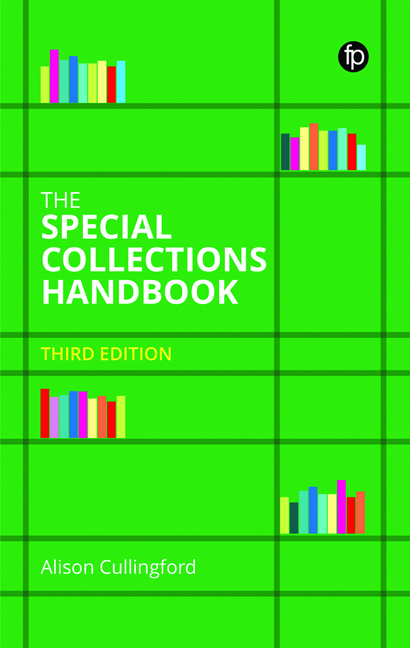Book contents
6 - Digitisation and Digital Libraries in Special Collections
Published online by Cambridge University Press: 28 April 2022
Summary
Introduction
In this chapter we examine the digitisation of analogue collections and the curation of digital content, including:
1 Standards.
2 What is digitisation and why digitise?
3 What to digitise?
4 Digital hidden collections.
5 Digitisation choices and models.
6 Digitisation kit.
7 Digitisation workflow.
8 Digital curation and the digital library.
9 Suggestions for further reading and useful websites.
I concentrate on the management of digitisation and digital files, rather than on technical and systems concerns, on the assumption that most libraries will have access to such expertise. For those who need it, technical guidance is in ‘Further reading’.
Standards and guidelines
The increasing use of shared platforms means it is essential that digitised content and metadata are produced in a consistent way. However, standards are still developing as technologies evolve.
IFLA produced helpful guidance for managers:
• IFLA Rare Books and Special Collections Section (2014), an overview of project management for digitising Special Collections
• IFLA Guidelines on digital unification, Nyffenegger and Jensen (2019).
The most widely used technical guidelines are:
1 The International Image Interoperability Framework (IIIF), a set of open standards widely adopted by libraries and other digitising organisations. Using linked data and other protocols, IIIF makes it easy to share materials and move them between systems, creating a richer and more flexible experience for users. https://iiif.io.
2 The Mirador image viewer, also open source, allows users to see, annotate and compare multiple images from IIIF-compliant sites. The Durham Priory Library Revisited project follows these standards. https://projectmirador.org.
3 Metamorfoze is the Netherlands’ national programme for the preservation of paper heritage. To ensure consistent imaging quality, a set of guidelines was produced (Van Dormolen, 2012). Three quality levels or tolerances were set for each technical element. www.metamorfoze.nl.
4 Federal Agencies Digital Guidelines Initiative (FADGI) is a collaboration of US federal agencies that aims to create common ‘technical guidelines, methods, and practices for digitized and born digital historical, archival and cultural content’. Its most significant output is benchmarking guidance for digitising still images (Rieger, 2016). Each parameter has a set of levels from 1 to 4 star. www.digitizationguidelines.gov.
Metamorfoze and FADGI are not easy reading for the non-specialist. Barrett (2020) discusses how the Bodleian's digitisation service engaged with these standards and made use of them.
- Type
- Chapter
- Information
- The Special Collections Handbook , pp. 145 - 162Publisher: FacetPrint publication year: 2022



